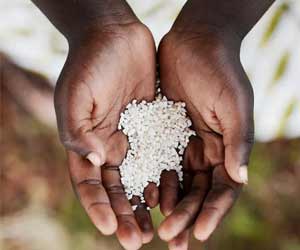A nuclear war between India and Pakistan could kill million and threaten global starvation, said sources.

The picture is grim. That level of warfare wouldn't just kill millions of people locally, said CU Boulder's Brian Toon, who led the research published today in the journal Science Advances. It might also plunge the entire planet into a severe cold spell, possibly with temperatures not seen since the last Ice Age.
His team's findings come as tensions are again simmering between India and Pakistan. In August, India made a change to its constitution that stripped rights from people living in the long-contested region of Kashmir. Soon after, the nation sent troops to Kashmir, moves that Pakistan criticized sharply.
"An India-Pakistan war could double the normal death rate in the world," said Toon, a professor in the Laboratory of Atmospheric and Space Physics. "This is a war that would have no precedent in human experience."
It's a subject that Toon, also of the Department of Atmospheric and Ocean Sciences, has had on his mind for decades.
He came of age during the height of the Cold War when schoolchildren still practiced ducking-and-covering under their desks. As a young atmospheric scientist in the early 1980s, he was part of a group of researchers who first coined the term "nuclear winter"--a period of extreme cold that would likely follow a large-scale nuclear barrage between the U.S. and Russia. Toon believes that such weapons are still very much a threat--one that's underscored by current hostilities between India and Pakistan.
Advertisement
There's no way to know how powerful these weapons would be--neither nation has conducted nuclear tests in decades--but the researchers estimated that each one could kill as many as 700,000 people.
Advertisement
"If you look at Hiroshima after the bomb fell, you can see a huge field of rubble about a mile wide," Toon said. "It wasn't the result of the bomb. It was the result of the fire." For the rest of the globe, the fires would just be the beginning.
That smoke would block sunlight from reaching the ground, driving temperatures around the world down by an average of between 3.5-9 degrees Fahrenheit for several years. Worldwide food shortages would likely come soon after.
"Our experiment, conducted with a state-of-the-art Earth system model, reveals large-scale reductions in the productivity of plants on land and of algae in the ocean, with dangerous consequences for organisms higher on the food chain, including humans," said study coauthor Nicole Lovenduski, an associate professor of atmospheric and oceanic sciences and a fellow of the Institute of Arctic and Alpine Research (INSTAAR).
Toon recognizes that the scope of such a war may be hard for people to wrap their heads around. But he hopes that the study will show people around the world that the end of the Cold War didn't eliminate the risk of global nuclear war.
"Hopefully, Pakistan and India will take note of this paper," he said. "But mostly, I'm concerned that Americans aren't informed about the consequences of nuclear war."
Source-Eurekalert











